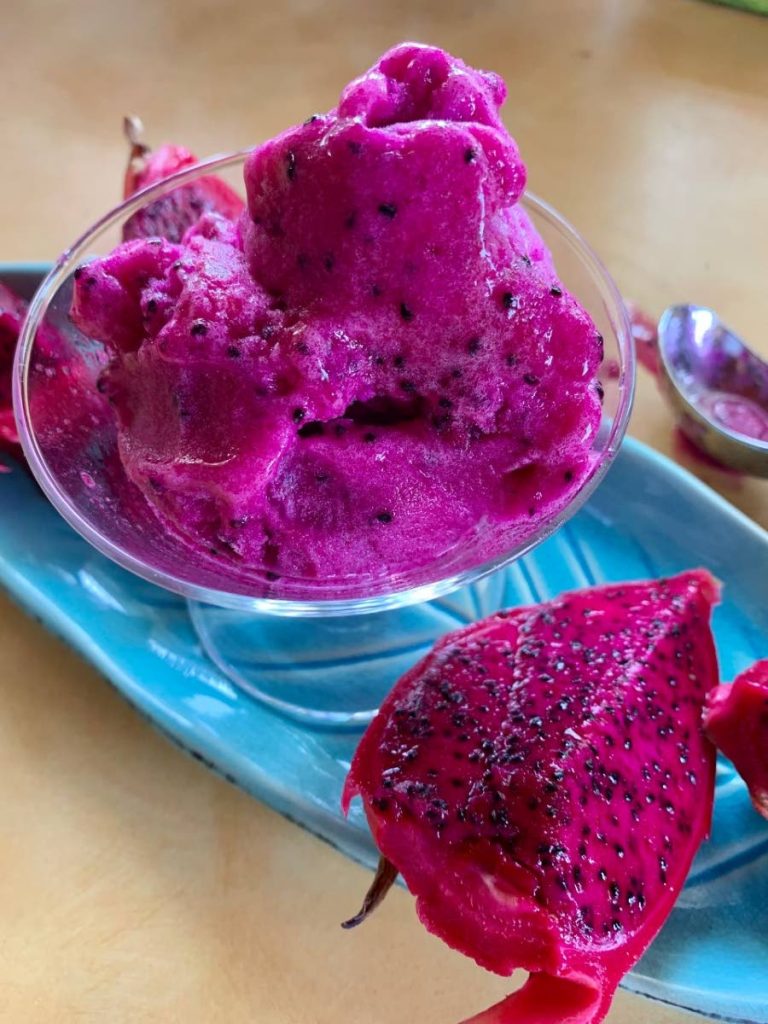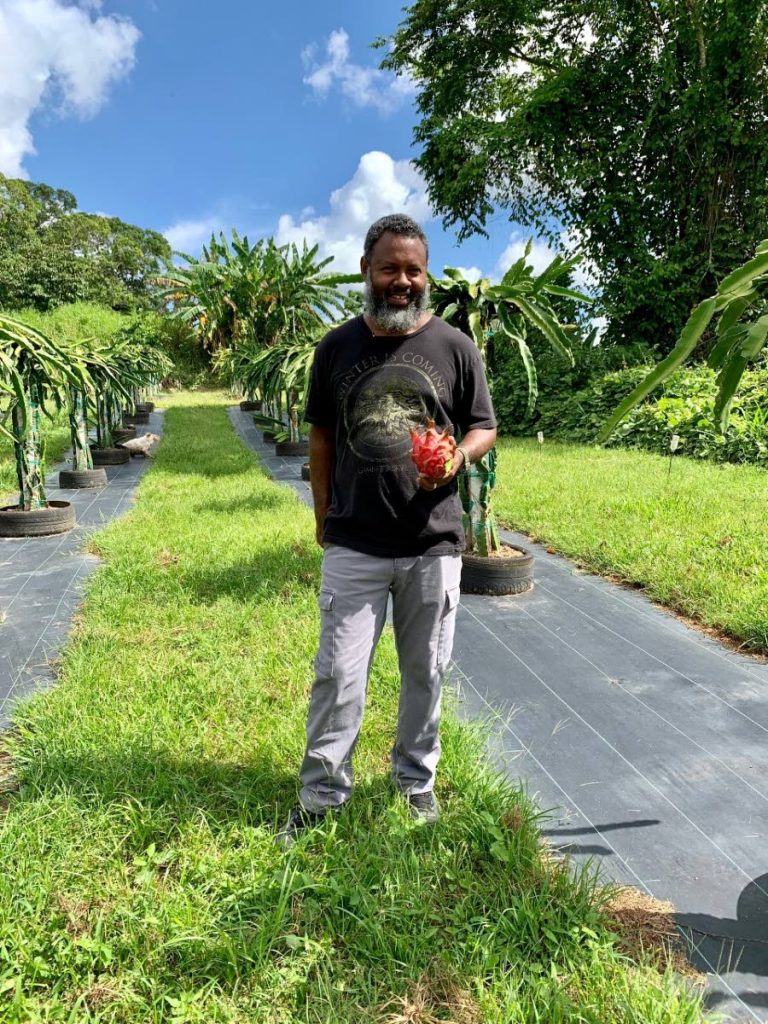A tropical dragon fruit story

Up until about five years ago dragon fruit conjured up images of smoothie bowls embellished with this vibrant red or white-fleshed fruit permeated with thousands of tiny black seeds. A very far-off reality for me for two reasons, I don’t like smoothie bowls and I was very unfamiliar with dragon fruit, unaware of it being indigenous to the Americas and the Caribbean.
Dragon fruit, or pitahaya is a tropical fruit of several different cactus species. Its most alluring quality is the fuchsia pink skin, overlaid with what appears to be green-tipped petals and, of course, the juicy pulp that lays within. It is also edible from skin to pulp.
Recently, my interest piqued when I sampled some dragon fruit and realised that it was in fact locally grown. I met up with the farmer Anderson Bissoon, who farms dragon fruit, on his Tropical Dragon Fruit Farm in south Trinidad.
Bissoon began his dragon fruit project five years ago when looking for exotic fruit to grow on some land he had prepared to farm.

Easy to grow and easy to multiply, he now has close to 500 trees all bearing this fruit. Bissoon experiments and cross pollinates the indigenous and imported varieties in order to offer a variety to his customers. He has yellow, white and red.
Dragon fruit is easy to cultivate from cuttings, with the growth cycle from nursery to fruit-bearing mature plant in around nine-12 months. The season for fruit bearing, according to Bissoon, is March to November with about eight cycles within that time frame.
The dragon fruit plant has long cactus stalks which must be pinned onto five-foot concrete stumps, which Bissoon gets fabricated for his plants. At the top, he places a circular frame, where he coaxes the cactus branches through to encourage them to hang down. Constant pruning is necessary to keep the trees manageable.
The first sign of fruit appears as bud on the cactus nodes along the branches. It takes about one to five days from bud to flower and then the magic appears. This hylocereus flower only opens to full bloom at night, from 7 pm-7 am. "The scent from these flowers lingers heavily in the night air,” said Bissoon, “with a sweetness resembling primrose.”
Thirty days after blooming the flower dries, the fruit matures and is ready for harvesting. The mature dragon fruit appears green at first and turns bright magenta two days later.
Bissoon is also experimenting with dehydrating the fruit, which tastes delicious, by the way, and has tried his hand at making anchar from the skin and tea with the dried flower pod.

A wonderful initiative in growing and harvesting a once imported fruit bringing us one step closer to sustainability in agriculture.
When you purchase a dragon fruit it is ready to be consumed, no need to wait for the fruit to ripen as we tend to do for our other local fruits. It will keep un-refrigerated for about one week and refrigerated for up to three weeks. To cut a dragon fruit slice into quarters, peel back the skin and remove the flesh or cut into two and scoop out the flesh.
Dragon fruit can be incorporated into many recipes, I have made a dragon fruit sorbet and stewed some with fresh guavas, I can easily see it making a show-stopping ice cream because of its vibrant colour, and a stunning upside-down cake.
The next time you come across dragon fruit don’t hesitate to try it out, you won’t be disappointed, it’s also high in vitamin C, magnesium and fibre and you would be supporting a local farmer.
Stewed guava and dragon fruit

1 lb guavas
1 cup brown sugar
1 cup water
1 lime, juiced
1 cinnamon stick
1 dragon fruit about 12 ozs in weight
Cut guavas in half, remove seeds and pulp, slice the skin into strips, place in a non-reactive saucepan with sugar, water, lime and cinnamon.
Cook until bubbly and simmer for about 40 until thick and syrupy.
Cut the dragon fruit into two, scoop out the flesh, chop and add to guavas, continue cooking for another 20 minutes or so.
Serve with ice cream.
Makes about 12 ozs
Dragon fruit and banana sorbet with brown sugar and lime

2 cups brown sugar
2 cups water
2 bananas
2 dragon fruits
½ cup fresh lime juice (pure)
2 tsp Angostura cocoa Bitters
Combine sugar and water in a saucepan, bring to a boil and cook for 10 minutes, remove and cool.
Cut the dragon fruit in half and scoop out the pulp place in a bowl.
Puree bananas with dragon fruit pulp.
Stir in cooled syrup, bitters and fruit pulp.
Chill in freezer.
Place into an ice-cream maker and churn for about 45 minutes.
Alternately place in a shallow 9x13-inch cake tin and place into freezer.
Every 20 minutes or so break up the iced-over pieces, stir and return to freezer until all the mixture had become iced.
Store in containers in the freezer.
Makes 1.5 litres


Comments
"A tropical dragon fruit story"